Introduction
In this program, the Theory of Everything (TOE), also called the Whole of Existence (WoE) in the Temic approaches, is developed as the study or an attempt to model the absolute vacuum, which is Consciousness-Energy or ConsciousnessEnergy or ConsciousnessENergy (CEN) — the Whole of Existence or the Multiverses.
In this approach, all disciplines, courses, and forms of knowledge involve studying this single system, CEN, or the absolute vacuum.
This is based on the fundamental principle of Consciousness Physics that states cen is the basic building block of the Whole of Existence.
To build the TOE, Consciousness Mechanics is used as the universal constructor, with disciplines, fields, all kinds of knowledge pictured using the Temigrams (Temic Diagrams) as forms of consciousness-energy (cenforms), where these disciplines/fields/forms of knowledge are simply seen as CEN transformations (transformations of cenforms or cen states — states of consciousness-energy) involving the actions of the CEN operators, squaket, squa, and ket operators.
Along with the Temigrams, which are a mathematical framework built in this Project, squa, ket, and squaket are new operators developed in Consciousness Mechanics for the mathematical description of motions and interactions at the deepest level of reality — consciousness-energy.
Known as cen operators, they are further explained in the section on Temic Algebra below.
In the Temic paradigm, multi-faceted, interconnected, interdependent, interdisciplinary, and interwoven approaches to constructing the TOE are adopted based on the fundamental building block of the universes, which is consciousness-energy or cen.
To this end, different variables (parameters) are developed representing contributions from each discipline/field/knowledge form to this single theoretical framework called the Theory of Everything.
The program of building the TOE can be seen as linking or weaving all disciplines, fields, and kinds of knowledge together using cen to form a single framework (the TEPET or CEN Fractal), just like it is done when constructing the TEPET.
Models and Frameworks
Temic Universal Laws (also called Temic Fundamental Principles of the Universes)
The following axioms are developed from the Base Axiom and will be used as fundamental principles or building blocks to develop all forms of knowledge. These principles form the basis or foundational structure for the Theory of Everything. They are the Eight Axioms of Consciousness Mechanics, also known as the Axioms of Everything (AxioE):
-
- Base Axiom or CEN: Consciousness-energy is the absolute vacuum, and CEN (the absolute vacuum or the Collective Entanglement) is all that really exists [Axiom 0]
CEN or the Base Axiom is an entanglement that undergoes Big Bang expansions infinitely in cycles to yield an infinite number of axioms or fundamental principles (which are cenforms), evolving based on the Temigram Pattern, a Universal Pattern, to yield an infinite number of axioms or fundamental principles. These axioms are Universal Laws or Principles: They are fundamental principles of the Multiverses or nature that exist independently of our perception/observation: - Entanglement and Symmetry: All things are connected or entangled and balance one another [Axiom 1]
- CEN Transformation: All things in existence (whether living or not) are manifestations or forms of CEN called cenforms in the TEMIC approaches [Axiom 2]
- Evolution: All things in the multiverses change no matter how long [Axiom 3]
- Superposition: Anything or any system exists infinitely in a superposition or combination of all possible cenforms or censtates unless when observed/experienced and that forces its wave function to collapse to a specific cenform (form of consciousness-energy) or specific censtate (state of consciousness-energy) that is measured/seen [Axiom 4]
- Space-Time Emergence: Space-time is an emergent property; it is not fundamental to the universes [Axiom 5]
- Universal Scaling: Universal scaling (hierarchy) occurs in the outer universes due to Axiom 4 that says all things in the multiverses change no matter how long [Axiom 6]
- CEN Ordering and Balance: All things in the multiverses, or Existence generally, occurs in cycles infinitely [Axiom 7]
- Base Axiom or CEN: Consciousness-energy is the absolute vacuum, and CEN (the absolute vacuum or the Collective Entanglement) is all that really exists [Axiom 0]
In the Temic Models, the Theory of Everything simply states CEN (the Collective Entanglement or Consiousness-Energy or the absolute vacuum) is everything that really exists: consciousness-energy is the basic building block of the multiverses, i.e., the Whole of Existence (WoE).
In this program, Consciousness Mechanics and IntegratED are used as key tools to develop the TOE.
IntegratEd is a term coined from “integrate” and “education”.
Mathematical Models and Structures
Consciousness Mechanics
Consciousness Mechanics is the branch of mechanics that deals with the mathematical description of motions and interactions at the deepest level of reality — consciousness-energy or simply cen.
At this level (cen), every possible measurement that can be made on a system is described by a cen operator, while a cen function is a rule, expression, or law defining a relationship between one variable and the other.
TEPET Fractal

Introduction
TEPET is a set of infinities, or better still, a set of super-infinities — double infinity ![]() .
.
In the above figure, TEPET is shown as a Fractal depicting CEN as it expands infinitely in cycles.
This Fractal, which is the mother of all fractals, i.e., the Fractal of Everything (FractoE), expands infinitely in this manner. It is symmetric, self-similar self-replicating, and self-organizing.
The tepet symbol ![]() is the same system expanding infinitely to yield more and more tepets, which are cenforms. This is the pattern underlying all things (whether living or not) in existence. TEPET is the mother of all fractals.
is the same system expanding infinitely to yield more and more tepets, which are cenforms. This is the pattern underlying all things (whether living or not) in existence. TEPET is the mother of all fractals.
I developed this fractal independently using the Ouroboros symbol (infinity sign) shown below and applying the axioms 0–7 above.
With these fundamental principles in mind, I started constructing the TEPET by drawing the infinity sign, ∞ Then, I drew another infinity sign ∞ vertically on the first one ensuring their centers coincide perfectly. These two steps formed the tepet symbol, ![]() .
.
I repeated the two steps again by drawing cycles starting from and ending at the tepet’s center each time, ensuring the new tepet formed encloses the previous one.
To get more and more tepets, I carried out the third step repeatedly to generate the TEPET shape (the Fractal).
Days later, I got to learn about Bernoulli’s Lemniscate, which is a curve shaped like a figure-eight.
The TEPET Fractal highlights the entanglement and symmetry that underlie all aspects or elements of nature, the Universe, and the Multiverses.

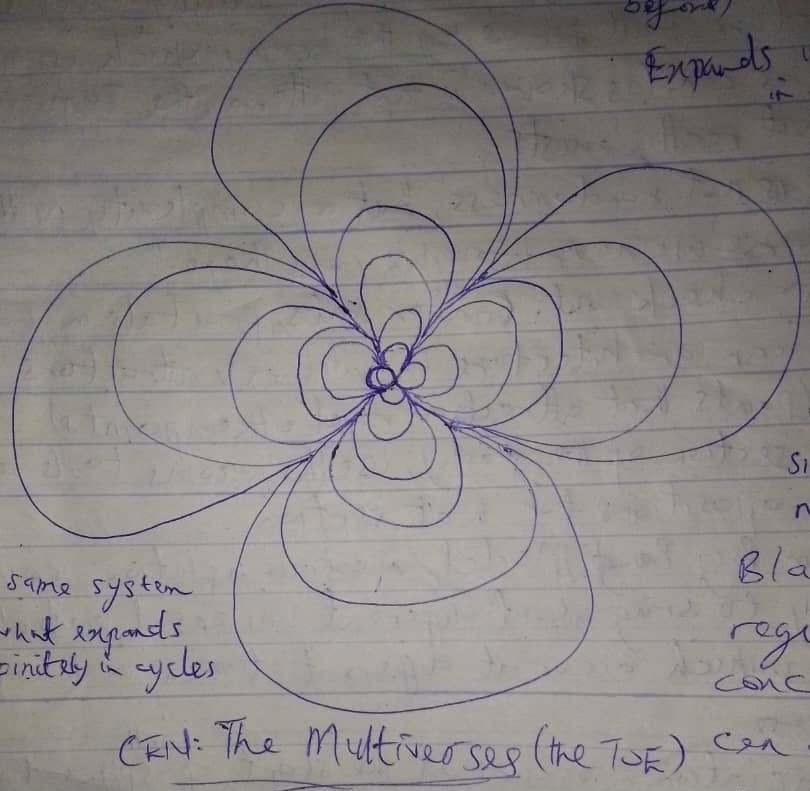
Temic Algebra
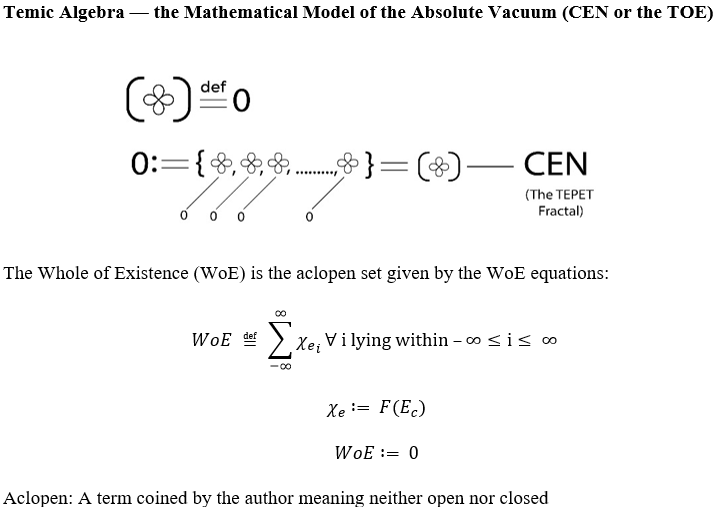
Introduction
By applying the Eight Axioms above, Cayley-Dickson construction, Lagrange theorem in Group Theory, and Hurwitz’s theorem, Temic Algebra was developed as a new algebra to explain the Physics of Everything, Consciousness Physics.
The algebra is a primary aspect of Consciousness Mechanics, which is also referred to as the Mathematics of Infinities.
Called the Algebra for Everything (AlgebroE), Temic Algebra is a kind of universal algebra that highlights the entanglement and symmetry underlying nature, the Universe as a whole, or any universe at all.
In Consciousness Mechanics, a new symbol is introduced to represent 0, and this is ![]() , which is known as the tepet symbol.
, which is known as the tepet symbol.
This symbol was used to construct the TEPET Fractal depicting CEN or TOE. ![]() is the underlying pattern of cen, the basic building block of the Whole of Existence, and represents entanglement (also called matrix or archetype) in this Project.
is the underlying pattern of cen, the basic building block of the Whole of Existence, and represents entanglement (also called matrix or archetype) in this Project.
The symbol was formulated by adding two infinities together:
+ ∞ + (-∞) = 0 or ![]() (Nothing/CEN/vacuum)
(Nothing/CEN/vacuum)
![]() is superposed infinities, or super-infinities, means one infinity, ∞, superposed or combined with another infinity, ∞, to form this tepet symbol.
is superposed infinities, or super-infinities, means one infinity, ∞, superposed or combined with another infinity, ∞, to form this tepet symbol.
![]() depicts CEN or Nothing or the absolute vacuum in Consciousness Mechanics.
depicts CEN or Nothing or the absolute vacuum in Consciousness Mechanics.
Temic Algebra is a mathematical structure showing the elements of the TEPET set , which consists of entanglements in superposed infinities (or super-infinities in short).
You can think of this symbol for superposed infinities ![]() as multiples of something in infinity folds combined with multiples of the same thing in infinity folds in the reverse direction to form a double infinity,
as multiples of something in infinity folds combined with multiples of the same thing in infinity folds in the reverse direction to form a double infinity, ![]() .
.
The set captured in Temic algebra is known as TEPET set, a set built using the Tepet symbol. In the mathematical structure, the net sum of each entanglement represented by the tepet symbol in the TEPET set is zero, and the total sum of all entanglements (all the zeros) is also zero: the absolute vacuum.
This follows from the Base Axiom, Axiom 0, which says Nothing or the absolute vacuum or CEN (symbolized by TEPET, ) is really all that exists, and anything else is interpretation of the brain.
The TEPET set shown in this structure is an aclopen set: This is a set that’s neither open nor closed and represents CEN or TOE or WoE in Consciousness Mechanics.
This follows from the Base Axiom that states CEN/Nothing/absolute vacuum is all that exists. Hence, the Universe, or any universe at all, is neither open nor closed, i.e., space-time only exists within it, not outside of it.
In other words, the Universe, or any universe, does not occupy space and is not bound by time. From the perspective (frame of reference) of the absolute vacuum, which is also called the Beginning, in this Project, the Universe has no beginning and no end.
But from the perspective (frame of reference) of an observer in this Universe, our Universe has a beginning (about 13.7 billion years ago based on current estimates) as space-time exists within it.
Temic Algebra is simply an algebra of entanglements, underlying all aspects or elements of the matrix we perceive as reality.
CEN or TEPET can be seen as a set 0 or ![]() (depicted in Temic Algebra), which is neither open nor closed applying Axiom 5 that states space-time is an emergent property; it is not fundamental to the universes.
(depicted in Temic Algebra), which is neither open nor closed applying Axiom 5 that states space-time is an emergent property; it is not fundamental to the universes.
To describe this set, the author coined the term aclopen (the opposite of clopen, which refers to a set that is both open and closed).
TEPET is defined mathematically using squakets (formed by combining square brackets with parentheses) as follows:
![]()

The second symbol above is called squakets and is used to define aclopen sets. Squakets were formed by combining square bracket with parenthesis.
In Consciousness Mechanics, cen operators (squa, ket, and squaket), and different cen functions are developed exploring how CEN changes and evolves into all aspects of the matrix we perceive as reality.
Everything in nature (the Universe) exists in pairs: male and female; positive and negative; right and wrong; right and left; good and bad; right and left; up and down; and infinities of other pairs. Generalizing this to the Universe as a whole, the Universe also its own pair: the anti-Universe, which is dominated by antimatter (anti-you, anti-me, anti-Earth, and tons of anti-others), just like matter dominates our own Universe.
This is one of the universes the consciousness of the dead transitions to on leaving the Earth.
The Universe is not physical. That’s an illusion created by the brain. The Universe is a cenform or censtate. Simply put, the Universe is an idea in the head, a dream, or imagination.
All these pairs are manifestation of the symmetry underlying nature, which is inherently mathematical, as examined in Axiom 2 above, one of the Eight Axioms of Consciousness Mechanics.
However, the matrix we perceive as nature (the Universe) is not really physical but a form of Consciousness-Energy (CEN).
Our perception of the elements of nature as physical is interpretation of CEN, which is an illusion, generated by the brain.
This is covered in the book of Consciousness Physics.
Temigrams: A Universal Pattern

Introduction
Temic Diagrams, or Temigrams, are universal patterns that show how everything in existence (WoE or CEN) undergoes evolution (change) with time via Big Bang expansions. Temic Diagrams are the Diagrams for Everything (DiagroE) that can be used to study the evolution of everything in universes (whether living or not) based on CEN.
This follows from Axiom 3 that says all things in the multiverses change no matter how long, and Axiom 6 about universal hierarchy.
This is covered in the book of Consciousness Physics.
The “Cenpatible” Approach
In the Temic paradigm, multi-faceted, interconnected, interdependent, interdisciplinary, and interwoven approaches to constructing the TOE are adopted based on the fundamental building block of the universes, which is cen.
One of the aims of building the Grand Theory based on the Temic approaches in Consciousness Science is to fully harness the power of the human brain to solve the increasingly complex and interconnected global challenges experienced on this planet aided by Artificial Intelligence (AI), machine learning, deep learning, and other key advances in scientific computing.
In the Temic approaches, the study of any discipline or course is the study of CEN using the specific approaches of that discipline: When people are studying various concepts, subjects, disciplines, they are all studying the same system, CEN, but they are doing so in different ways. A more holistic and integrated approach to education, pedagogy, and research is better and will be more effective.
Constructing the TOE requires the development of every discipline or field based on the principles of Consciousness Physics or Consciousness Mechanics (Temic Universal Laws), so that the discipline or field can be “conpatible”, also called “cenpatible”.
“Conpatible” is a term coined by the author from “consciousness + compatible” and “cenpatible” from “cen + compatible“. This “conpatibility” or “cenpatibility” approach using cen as the basis requires focusing on consciousness and energy (cen) and its relationship or connection with all other disciplines and fields, with all the connections weaved or linked together (see the figures below) as a single framework: the TOE.

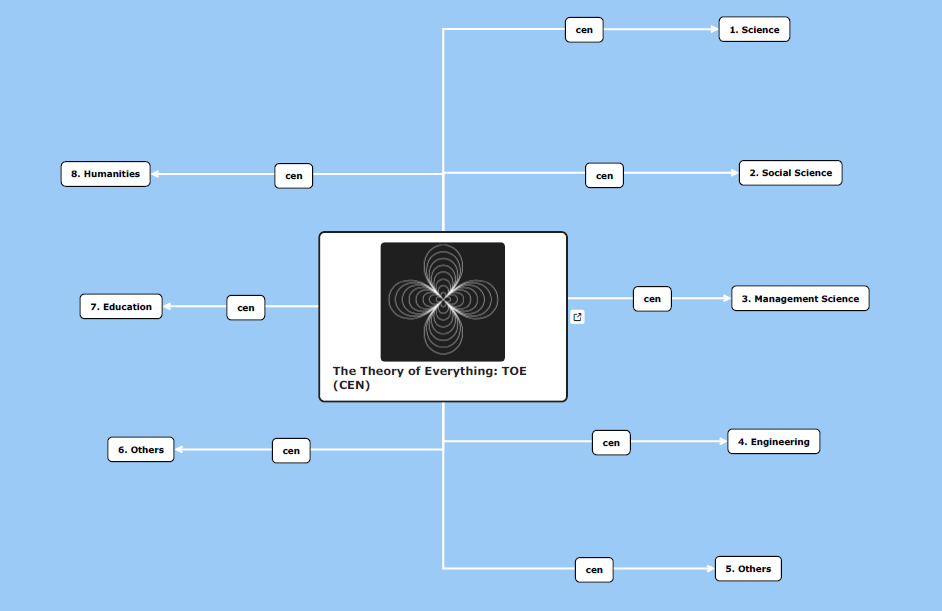
IntegratEd
This is a term coined from “integrate” and “education”.
What Is the Significance of the TOE Using the Temic Approaches?
The significance of the multi-faceted, interconnected, interdependent, interdisciplinary, and interwoven approaches to the Theory of Everything (CEN) offered by the Temic Models lies in the fact they allow humanity to harness the infinite power of the brain deeply so as to solve major problems humanity faces using the TOE framework, such as
- Increasing global life expectancy
- Making more accurate weather predictions
- Accomplishing UN SDGs
- Achieving world peace
- Combating climate change
- Learning from natural history to ensure the Homo sapiens species survive for longer than the extinct human species
- Finding the cure to various life-threatening diseases such as cancers, COVID-19, and others
- Tackling the problem of systemic racism, tribalism, and related vices
- And others

Credit: PWC
Quantum Gravity
Quantum Gravity: In Theoretical Physics, Quantum Gravity is a sub-field that deals with describing gravity based on the principles of Quantum Mechanics.
The Temic Approach to Quantum Gravity
Temic Relativistic Consciousness Principle: Reality Is Both Local and Non-Local
Whether reality appears local or non-local depends on the observer’s frame of reference. Imagine an observer whose frame of reference is the Collective Entanglement (CEN), the absolute vacuum ![]() , and the observer possesses Fundamental Consciousness of infinite energy and has infinite brain power. Such an observer will see everything at once and consider all things, regardless of their distances apart, as interconnected as a huge matrix
, and the observer possesses Fundamental Consciousness of infinite energy and has infinite brain power. Such an observer will see everything at once and consider all things, regardless of their distances apart, as interconnected as a huge matrix ![]() .
.
For such an observer, reality is non-local. However, for an observer such as a complex system like humans, our perception of reality is very narrow because of the many limitations of our brains and sense organs.
Hence, we perceive things happening sequentially and regard many of them as disconnected from one another.
Thus, reality appears local to us. Whether reality appears local or non-local is relative and depends on the observer’s frame of reference.
Generally, whether certain elements of nature appear discrete (as in Quantum Physics) or continuous (as in Classical Physics), deterministic or probabilistic/stochastic/random, natural or unnatural/supernatural, local or non-local, physical or non-physical/unphysical (or spiritual in the religious context), is relative and depends on the observer’s frame of reference, based on the level or scale at which the observer can perceive nature.
The scale at which we, or our instruments, observe anything in the Universe, or any universe, depends on the level of energy we are able to observe.
This is the Temic Relativity Principle, which is also called the Temic Relativistic Consciousness Principle: This is the Temic approach to tackling the scientific problem of quantum gravity.
As established by Einstein, time is relative, not absolute: It varies from one region or location to the other.
Consciousness Physics develops this notion further by stating that time varies from one location, region, planet, or universe to the other.
However, in some universes (the inner universes specifically), time does not exist at all. Therefore, time is essentially not an absolute quantity.
It is a mental construct and an emergent phenomenon, not fundamental to the universes.
Furthermore, it is also crucial to examine the relativity of time in relation to consciousness: The perception of time varies across complex systems, such as humans, i.e., everyone has their own time.
For instance, humans in various cultures of the world use various calendar systems, which differ in the calculation of time showing time varies even among members of the same species of complex systems such as humans.
On the Gregorian calendar used mainly in the West and many other parts of the world, today’s date is 18th December 2023; on the Hijrah calendar used mainly in Arab nations, today’s date is 5 Jumada II 1445 AH (5/6/1445); on the Kọ́jọ́dá calendar of the Yoruba people of South-western Nigeria, the date is Ọ́jọ́ ájé, Óṣu Ọ̀pẹ, year 10065.
These systems show the perception (measurement) of time to the humans (complex systems) that designed such calendars or the key figures (personalities) the calendars was developed with the figures used as a reference point (frame of reference).
For instance, if you create a calendar system using your date of birth as the starting point (the first year) of the calendar, it can be adopted as the system of time measurement in your culture, showing how you and your people perceive time in a way unique to you and different from such systems in other places.
Thus, the perception of time varies in relation to consciousness.
Simply put, the photons of consciousness waves affect the flow of time as perceived by an observer. Time varies from one living system or complex system (plants; animals; planets; stars; universes) to the other.
To gain a comprehensive understanding of all the mathematical frameworks and models covered in this section, you can get the book of Consciousness Physics.
Under Development: iTOE
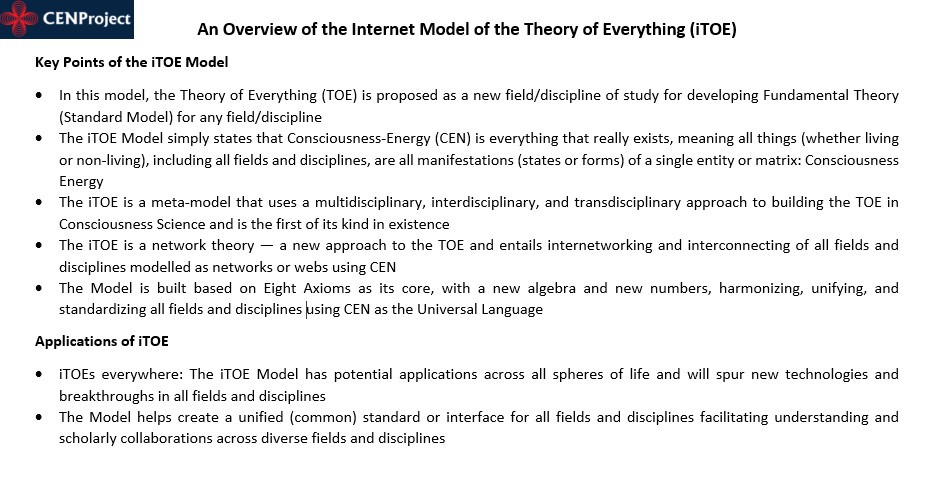
To be updated very soon…
ToELabs
KnoWeb (a cenform/censtate)

